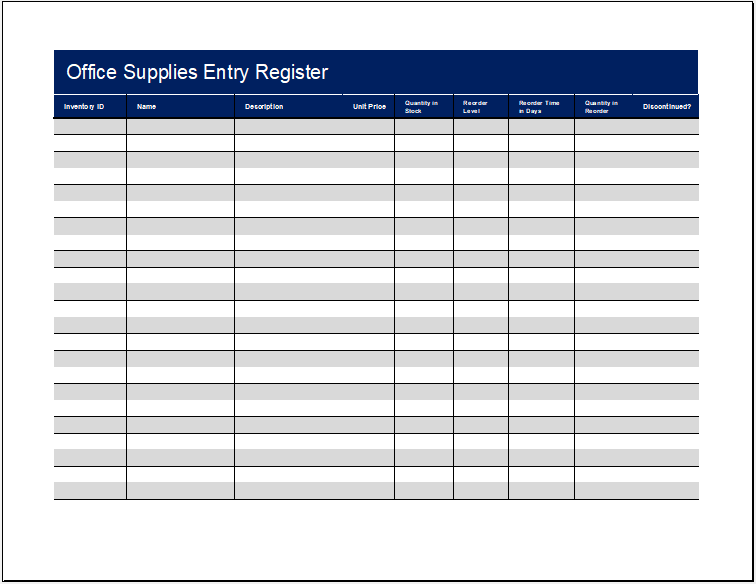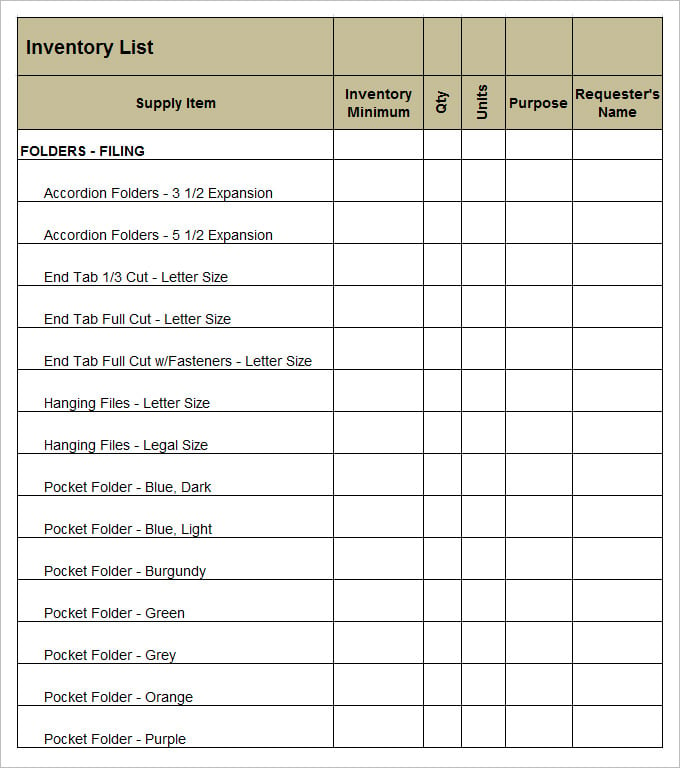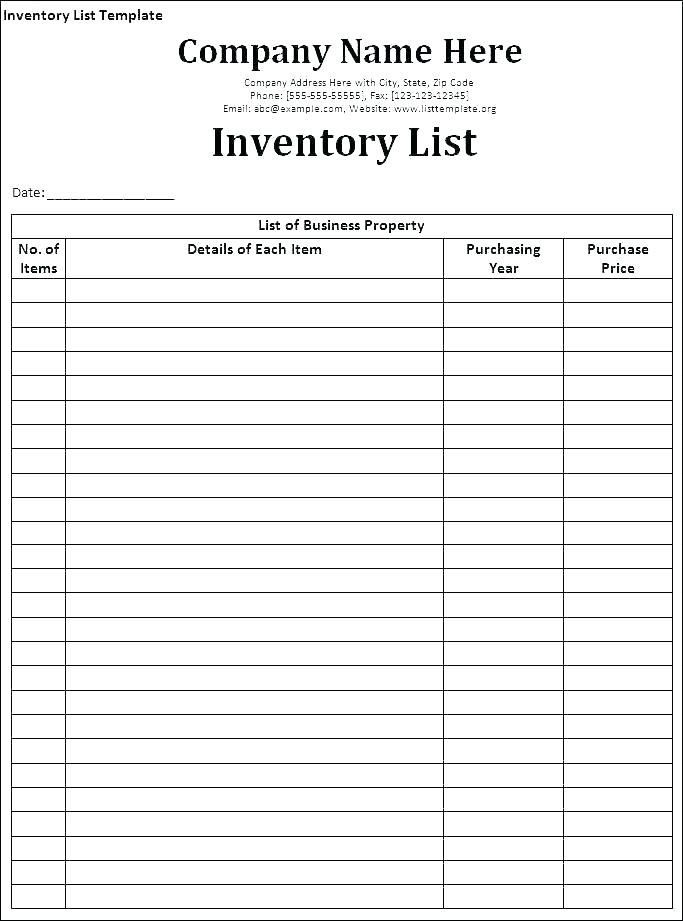
An office supply inventory list is a comprehensive record of all the items and supplies that are available in an office. It includes everything from pens and paper to computers and furniture. The purpose of maintaining an inventory list is to keep track of what supplies are on hand, and what needs to be ordered, and to prevent shortages or overstocking.
Having an organized and up-to-date inventory list is essential for efficient office management. It helps in planning budgets, tracking expenses, and ensuring that employees have the necessary tools and resources to carry out their work effectively.
Why is an Office Supply Inventory List Important?
An office supply inventory list is important for several reasons:
- Cost control: By keeping track of your office supplies, you can avoid overstocking and unnecessary purchases. This helps in managing your budget effectively.
- Streamlined operations: A well-maintained inventory list ensures that employees have the necessary supplies to carry out their work without any delays or interruptions.
- Preventing shortages: By regularly updating your inventory list, you can identify when supplies are running low and order them in advance to avoid any shortages.
- Easy tracking: An inventory list provides a clear overview of what items are available, making it easier to locate and retrieve supplies when needed.
- Budget planning: By analyzing your inventory list, you can identify which supplies are frequently used and allocate your budget accordingly.




How to Create an Office Supply Inventory List
Creating an office supply inventory list might seem like a daunting task, but with a systematic approach, it can be done efficiently. Follow these steps to create an effective inventory list:
1. Determine the Categories
Start by categorizing the different types of office supplies that you have. This could include categories such as stationery, technology, furniture, cleaning supplies, and kitchen supplies. Breaking down your inventory into categories will make it easier to organize and locate specific items.
2. Identify the Essential Items
Make a list of the essential items that are crucial for the smooth functioning of your office. These items may include pens, paper, printers, computers, desks, chairs, and basic cleaning supplies. Having a separate list of essential items will help you prioritize and ensure that these items are always in stock.
3. Assign a Unique Identifier
Assign a unique identifier to each item on your inventory list. This could be a serial number, barcode, or any other method that allows you to easily identify and track the items. The unique identifier will help in keeping accurate records and preventing any confusion or duplication.
4. Record the Quantity and Location
For each item on your inventory list, record the quantity that is currently available and the location where it is stored. This will help in quickly locating the items when needed and prevent unnecessary duplication of purchases.
5. Set Reorder Points
Determine the minimum quantity threshold for each item that should trigger a reorder. This will help in preventing shortages and ensure that you always have an adequate supply of essential items. Set reminders or notifications to alert you when the quantity falls below the reorder point.
6. Regularly Update and Review
It is important to regularly update and review your office supply inventory list. Conduct periodic audits to ensure accuracy and make any necessary adjustments. Remove any obsolete or non-functional items from the list and add new items as they are acquired.
7. Utilize Inventory Management Software
If managing a large inventory becomes overwhelming, consider utilizing inventory management software. These tools can automate the inventory tracking process, provide real-time updates, and generate reports for better analysis and decision-making.
Tips for Managing Office Supplies
Here are some additional tips to help you effectively manage your office supplies:
1. Delegate Responsibility
Assign someone in your office to be responsible for managing the inventory list and ensuring that it is regularly updated. This person can also be in charge of placing orders and tracking deliveries.
2. Implement a Check-Out System
If your office has shared supplies, implement a check-out system where employees can sign out the supplies they need. This helps in keeping track of who has borrowed the items and ensures their return.
3. Conduct Regular Audits
Perform regular audits to check for any discrepancies between the inventory list and the actual stock. This will help in identifying any issues, such as theft or misplacement, and ensure that your records are accurate.
4. Optimize Storage Space
Make the most of your office storage space by organizing supplies logically and efficiently. Use labels and clear containers to easily identify the contents and maximize accessibility.
5. Encourage Responsible Usage
Encourage employees to use office supplies responsibly and avoid wastage. Provide guidelines on how to conserve resources, such as printing double-sided or using electronic documents instead of paper whenever possible.
Download The Inventory List Template!
An office supply inventory list is a vital tool for efficient office management. By creating and maintaining an accurate inventory list, you can control costs, streamline operations, prevent shortages, and ensure that your office has everything it needs to function smoothly.
Follow the steps outlined in this guide and implement best practices to effectively manage your office supplies.
Office Supply Inventory List Template Excel – Download